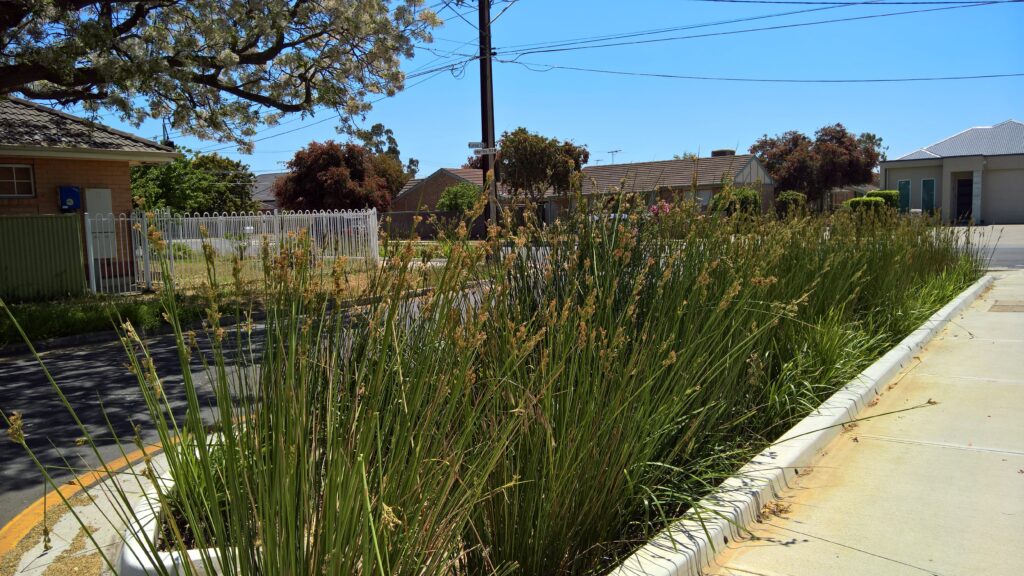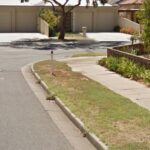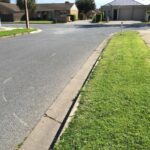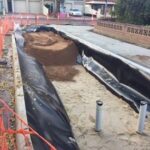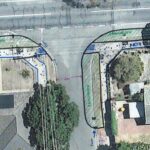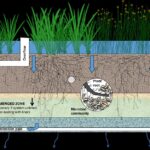Project planning & design
The raingarden project at the corner of Hartley Avenue and Jarman Terrace was the first of three projects initiated by the City of Charles Sturt in 2016/17 as part of a longer term project for the Tracey Avenue catchment, Flinders Park, to improve stormwater quality. The distributed raingarden approach was proposed to avoid large, heavily engineered litter trap structures located at the catchment outfall which, in the council’s experience, can be costly to maintain.
Unlike litter traps, raingardens provide space efficient stormwater treatment and also provide other benefits such as improving street aesthetics, increasing biodiversity in street vegetation, passively irrigating street trees and some urban cooling affects. They can also be incorporated with traffic calming devices to reduce traffic speeds.
A thorough site investigation by DesignFlow led to six types of raingardens being nominated as suitable for the Tracey Avenue catchment. These took into account the existing road configuration, road dimensions and location of stormwater infrastructure. The three raingardens utilised the ‘intersection throat’ design, to provide a traffic calming effect.
A catchment-wide assessment has nominated approximately 85 locations where raingardens could be installed. These would vastly reduce pollutants loads reaching the Torrens River and provide many benefits to the local streets.
WSUD features and design criteria
Previously, stormwater in the Tracey Avenue sub-catchment was managed by a kerb and gutter system draining via side entry pits (SEPs) into a conventional underground stormwater pipe network. Stormwater then discharged untreated directly into the River Torrens via the Tracey Avenue Catchment River Outlet.
The City of Charles Sturt undertook a water quality strategy to retrofit raingardens to the catchment’s existing SEP locations to collect and clean stormwater runoff. Raingardens have been designed to collect all road runoff and stormwater street discharge from adjoining dwellings in the catchment. The raingardens contain plant species and natural soils that remove pollutants, including nitrogen, from the stormwater. Clean water is then drained from the raingarden back into the underground network and into the River Torrens.
WSUD features
Bioretention – raingardens
- 3 raingardens giving a total treatment area of 3Ha (0.3% of impervious contributing catchment)
- A saturated zone of 450mm depth to assist plant viability and storage capacity
- A design infiltration rate of 150 to 200mm/hr through filter media
- HDPE lined system with no infiltration.
Back
Contact us to provide any new information or images for existing WSUD projects.
Update WSUD project
